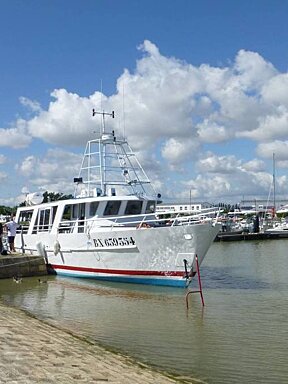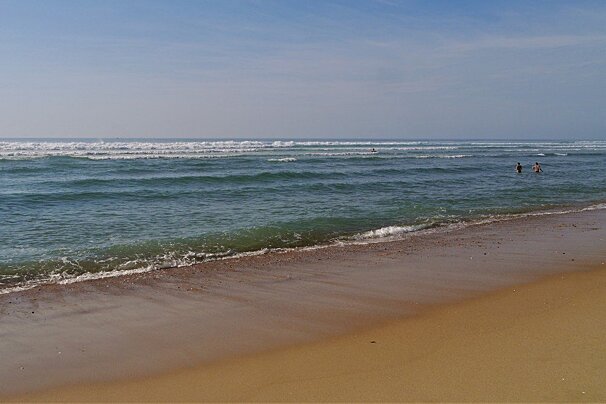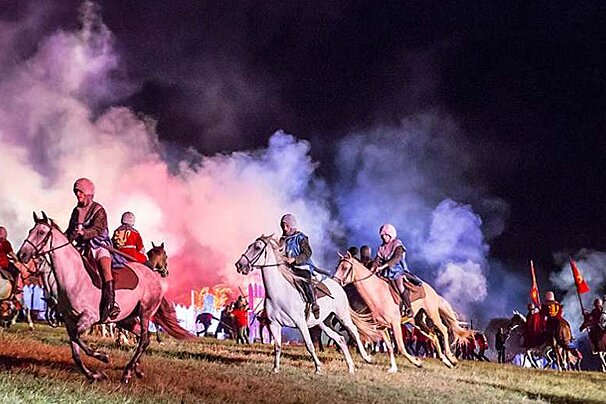
© vinsdegraves.com/
Graves Appellation
Historic region to the south of the city of Bordeaux
This ancient wine-producing region extends south from Bordeaux, along the Garonne river, with the majority of the vineyards situated on the left (west) bank. There are 3500 hectares of vineyards.
The name comes from the word for gravelly, which describes the soil type in this area. This gravelly soil is ideal for growing vines thanks to it's drainage qualities. The soil also helps reflect the sun light and allows an even distribution of the sun's warmth over the grapes. This in turn leads to more grapes ripening at the same time.
There are a number of further appellations in this region in addition to the broad Graves AOC. Pessac-Léognan is the area closest to Bordeaux and has a reputation for having the best soils. It is home to the Premier Cru Chateau Haut Brion.
The red wines are blended from Merlot and Cabernet Sauvignon, with small amounts of Petit Verdot, Malbec and Carmenere. Merlot tends to dominate, producing elegant wines rich in red fruits. Red wines produced in southern part of the Graves Appellation tend to be lighter, fruitier and can be drunk at a younger age.
Dry white wines can also be found in both Graves and Pessac-Leognan, made with Semillon and Sauvignon Blanc.
The famous sweet white wine Sauternes is made here. Other sweet wine Appellations include Barsac, Cerons and Graves Supérieures. Theses are made from Semillon, Sauvignon Blanc and Muscadelle.
Notable vineyards
The most famous Graves estate is Chateau Haut Brion. You may be surprised to find the vineyard in the suburbs of Bordeaux, a testament to it's historical roots. This is the only estate in the top classification of Bordeaux wines and visits are welcome but by appointment only.
Chateau de Malle is a grand estate, with an impressive chateau and formal Italian style gardens. It is located across both the Graves and Sauternes appellations and makes seriously good Grand Cru Classe Sauternes sweet wine. In addition, look out for the red Graves Chateau de Cardaillan, and the rare dry white wine M. de Malle. The chateau is open for visits from April until the end of October 2.00pm to 6.00pm.
Chateau de Chantegrive is a fairly young vineyard, from 1966, when two stamp collectors sold their collection and bought two hectares of vineyards in Graves. 50 years later and they now produce award winning red and white wines. You can visit the vineyard for a tour and tastings by appointment.
Chateau Pape Clement has a rich history, dating back to 1300 when it was first cultivated by the future pope Clement V when he was known as Bernard de Groth. In the past thirty years it has again become one of the great Pessac-Leogran vineyards. It produces a Grand Cru Classes de Graves both red and white) as well as other delicious Grands Vins de Graves. You can visit by appointment by phone or by booking online.
Chateau Haut Bailly is also located in Pessac-Leogran. Now owned by an American banker, his recent investments in the vineyard are paying off with the production of rich, full bodied and unique wine. The red is renowned for being silky smooth but with complex aromas. A small amount of rose is also produced on the estate. It is open year round for tours and there is a wine boutique on site.
A bit further south in Leognan is the Domaine de Chevalier. They mainly produce red wines with rich berry aromas. The white wine has exotic and citrus aromas an dis pale gold in colour. Visits are by appointment only.























